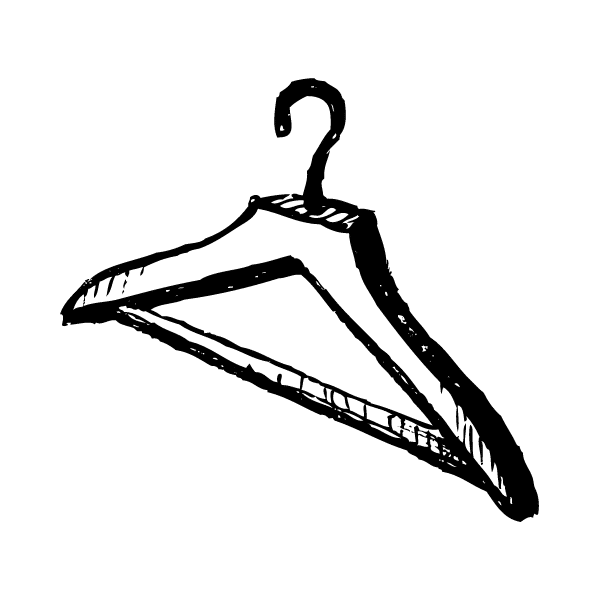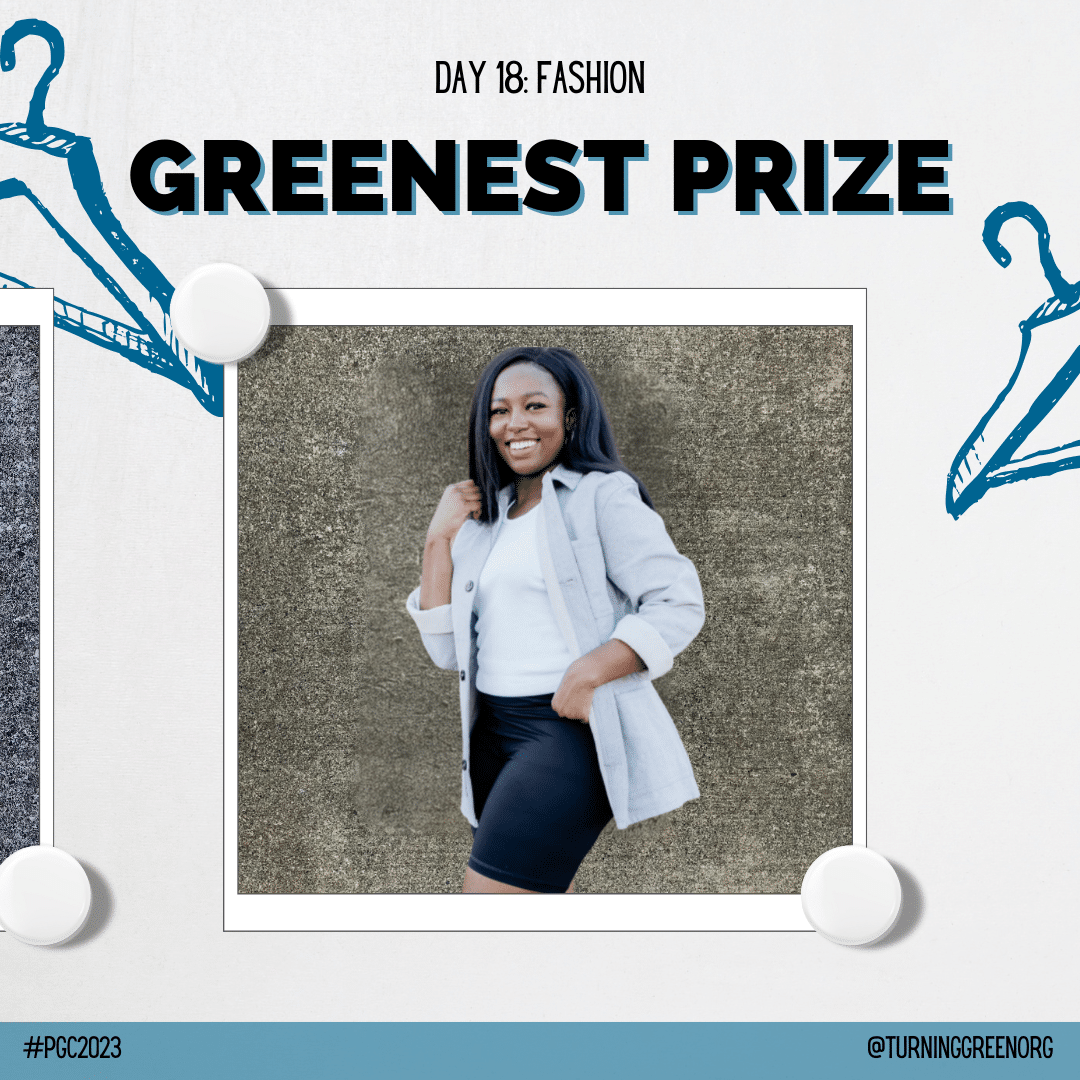
Do you know the true cost of your clothes?
What are you wearing today? Do you remember where or when you bought your go-to top, favorite pants or other wardrobe staples? Have you ever thought about who made your clothes, under what conditions, and how?
We live in a world of fast fashion, where companies churn out high volumes of cheap clothing at the expense of the planet and workers. To keep up with high demand, companies too often cut corners and slash prices while reducing material quality, working conditions, and livable wages. All of this contributes to the true cost of clothing.
What is that cost? Well, fashion supply chains are the world’s third largest polluter. Let’s take a more in depth look at how your clothes got to you. The first step is sourcing and producing the materials, which are either natural, synthetic, or a blend of both. For natural fibers like conventional cotton, we rely on agriculture, which can inefficiently waste water and release pesticides or other toxins. On the other hand, synthetic materials like polyester are often derived from plastics and petroleum, which means centuries to fully degrade. Textile production is responsible for 35% of microplastics in the oceans. And the dying of textiles responsible for over 20% of global water pollution.

The most sustainable options are organic cotton, recycled cotton, organic hemp, organic linen, Tencel and recycled wool. And be sure to look for companies that use responsible dying processes.
“As consumers we have so much power to change the world by just being careful in what we buy”
– Emma Watson, actress and environmental activist
Beyond environmental harm, fast fashion exacerbates major social justice issues. Businesses mandate rapid production of cheap clothing items, but do not offer workers fair pay or ethical working conditions. By outsourcing production to areas with limited labor laws, businesses exploit workers for higher production at lower costs, including long daily hours with minimal pay, child labor, and unsafe working conditions.
But we can all make informed decisions about fashion choices. When considering a new clothing item, refer to the Buyerarchy of Needs: use what you have, borrow, swap, thrift, make, then buy — in that order. When you choose to use what you already have or what already exists, you extend the life of clothing and limit further negative impacts of the fashion industry.
Second-hand shopping is a great way to find quality, unique pieces at a low cost! Consignment, vintage, and thrift shops often have merchandise coming in from various sources and people every day. While sold at discounted prices, the rise in popularity of buying second-hand has increased costs, making it less accessible for many families and individuals who rely on those affordable offerings. Additionally, plus-size people often struggle with buying second-hand, especially in the wake of “oversized” clothing trends that leave slim pickings for those who need larger-sized clothing. The next time you go to buy something, think about why. Only buy what you need, even if you’re buying second-hand.
If you do need to buy something new, many brands actively work toward positive outcomes through deep commitment and innovation. Patagonia sums up its commitment well, to “building the best product, causing no unnecessary harm, and using business to inspire and implement solutions to the environmental crisis.” Outerknown, Amour Vert, Nudie Jeans, Jungmaven, and others prioritize human rights, worker rights, and ethical supply chains as guiding principles while offering high-quality clothing made from all-natural organic fibers and breaking away from the environmentally and socially destructive fast fashion industry!
Websites like Good On You assess and rate ethical standards of clothing and accessory brands based on their impact on people, the environment, and animals. Transparency matters, which is another reason to prioritize buying from responsible companies and ensuring brands publish the lowest wages to maintain accountability.
Luckily, we aren’t on our own in the movement toward a sustainable fashion future! Fashion Takes Action is creating a conscious fashion future through education, awareness, research, and collaboration in order to transform the industry into one benefiting people and the planet. Fibershed develops equity-focused regional and land-regenerating natural fiber and dye systems that build soil and protect the health of our biosphere. ATTIRE is a sustainable fashion media hub providing the latest news, events, and resources you need to be a conscious fashion consumer.
Here at Turning Green, we advocate for sustainable fashion through our Fashion for the Planet campaign — and dress our students in stylish, climate-friendly clothing to draw attention to concerns about fast fashion and highlight the voices of our young leaders wearing their values on their sleeves, literally.
We, the people, have the power to drive demand for ethical fashion. Shopping second-hand, upcycling, trading clothes, or investing in better brands makes a powerful statement of support for responsible, sustainable, fair trade consumption, purchasing and lifestyles for the immediate and long term benefit of people and the planet.
Globally, the average person throws away 70 pounds of clothing per year (about 32 kg). For Americans, that number is almost 81 pounds (about 38 kg)! We all can and must do more to keep clothing out of landfills by swapping, buying used, repairing, and upcycling.
Watch the video “The True Cost of Fast Fashion” and choose one resource from Fashion Takes Action to read or watch.
Write a short reflection in under 200 words about what you’ve learned. Did you already know about the impact of the fast fashion industry or is this all new to you? What changes can you make to shift towards being a more sustainable consumer?
Pledge to make one change to dress more sustainably. Post it on Instagram with a caption about ethical/fast fashion. Tag @TurningGreenOrg, @FashionTakesAction, @Fibershed_, @AttireMedia, as well as #PGC2023 and #fastfashion.
Upload your results and responses in a PDF document including a screenshot of your social post. Include your name (or team name), username, and school on your upload.
Submission Guidelines
Does your favorite shirt have a label that says, “Made with 100% pesticide-sprayed cotton, chemical dyes, and/or sweatshop labor?” Highly doubtful! How can consumers ever really know what goes into making any article of clothing, or any other good? Think about the lifecycle of a conventional cotton t-shirt. Learn to question everything!
First, read this eye-opening article about the fast fashion supply chain.
Now that you are beginning to understand the full impact of fashion, let’s look more closely at your favorite shirt. Check the tag inside. What information does it provide?
Post a great picture of yourself on Instagram wearing your inside-out shirt. Caption the photo with the tag details, the impact of your shirt on workers and the planet, and why you chose to wear your shirt inside out. Tag @TurningGreenOrg, @TrueCostMovie, @FashionTakesAction, @Fibershed_ and @AttireMedia, as well as #PGC2023, #fastfashion and #WhoMadeMyClothes.
Upload your responses in a PDF document including a screenshot of your social post. Include your name (or team name), username, and school on your upload to be eligible to win.
Submission Guidelines
Do you have old shirts, jeans or clothing that no longer fit your body or style? What do you usually do with these pieces? Consider the resources used to create those garments and the importance of extending their life. So let’s get creative!
You’ve already learned about the Buyerarchy of Needs and best ways that we as individuals can help to create a sustainable fashion future. Now it’s time to put those into action!
Go through your closet and collect pieces that you have outgrown or plan to toss. Apply one of the Buyerarchy of Needs to the clothes you plan to get rid of.
Show us your plan to sustainably repurpose and reinvent your wardrobe! Act on one of them and capture it in photos. Briefly reflect on the following:
Post the photos to Instagram with a short caption about how you are acting on the Buyerarchy of Needs and why that matters. Tag @TurningGreenOrg, @FashionTakesAction, @Fibershed_, and @AttireMedia, as well as #PGC2023.
Upload your responses in a PDF document including a screenshot of your social post. Include your name (or team name), username, and school on your upload to be eligible to win.
Submission Guidelines
Film is a powerful tool for sharing information. The documentary, The True Cost, allows the audience to grasp the fashion industry’s tremendous toll on both people and planet.
Gather friends and/or family members to watch the eye-opening 90-minute documentary on Netflix, Amazon Prime video or other outlets. If you are not able to host an in-person watch party, you can still stream together! If you are unable to access the documentary, you can screen another feature on the topic from this list of sustainable fashion flicks.
Following the screening, host a Q&A with at least 3 people. Gauge their reaction to the film by asking the following questions or some of your own:
Summarize comments and answer the discussion questions yourself in one or two paragraphs.
Post a photo of your screening on Instagram that encourages people to learn more about the topic of fast fashion. Tag @TurningGreenOrg, @TrueCostMovie, @FashionTakesAction, @Fibershed_, and @AttireMedia, as well as #PGC2023.
Upload a PDF Document with a copy of the letter and your short reflection. Share how they responded and also how you felt. Include your name (or team name), username, and school on your upload.
Submission Guidelines
Up to 10 Greener and 10 Greenest outstanding submissions will be selected as winners.

Each Greener Winner will receive:

Each Greenest Winner will receive a $100 gift card from one of the following brands: